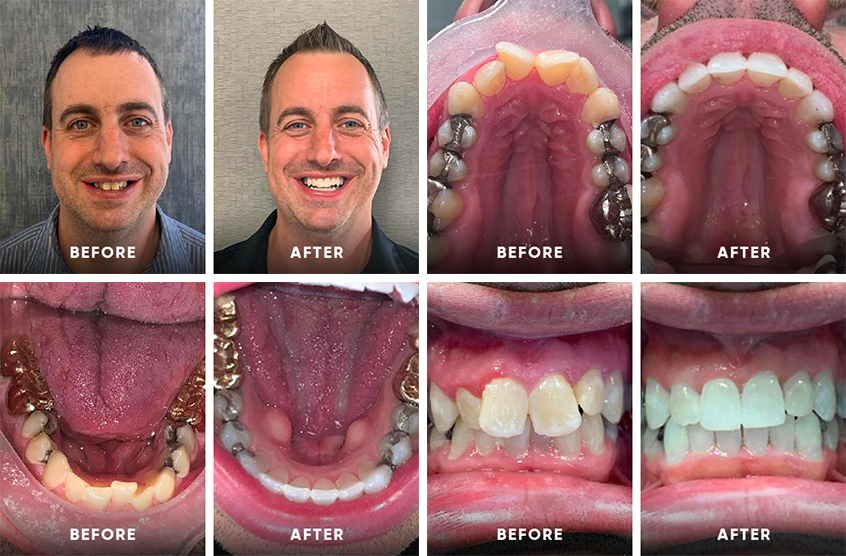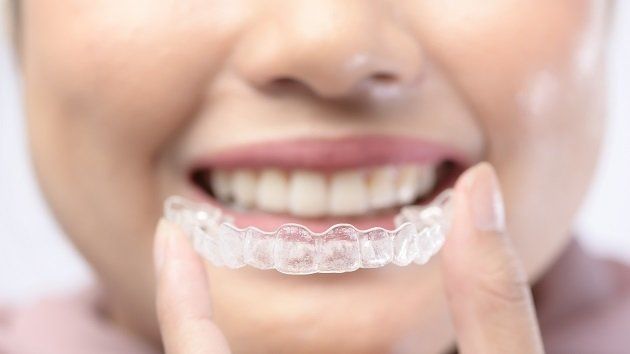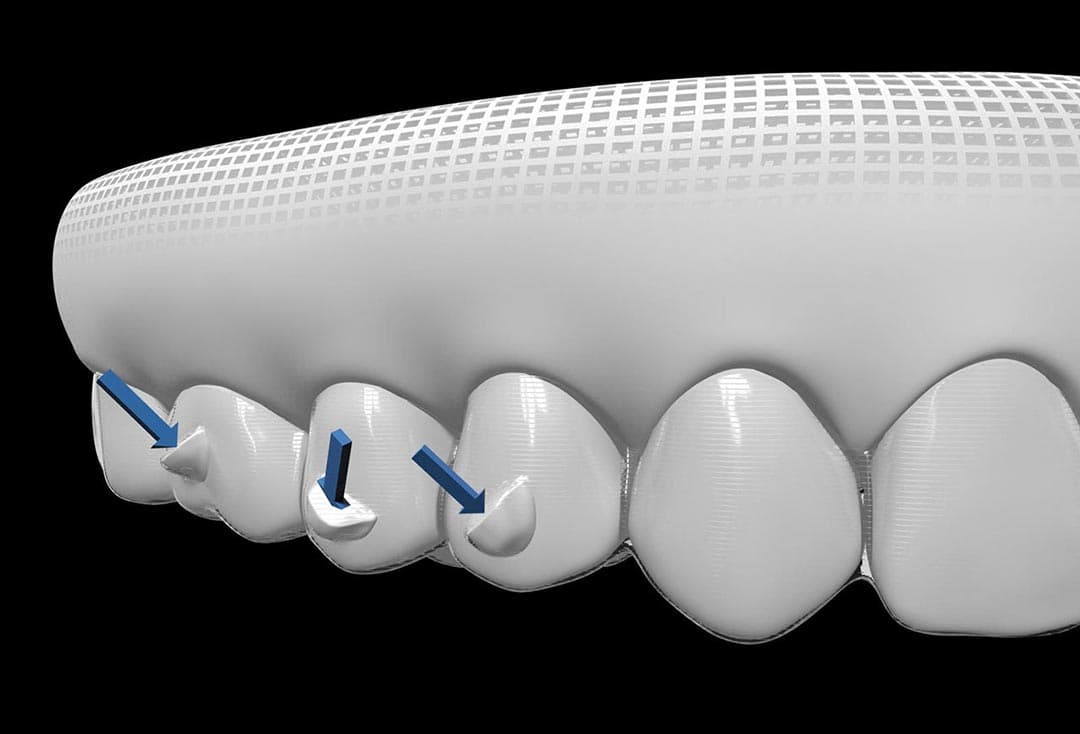How Invisalign Functions: Your Guide to Clear Aligners and Their Effectiveness
How Invisalign Functions: Your Guide to Clear Aligners and Their Effectiveness
Blog Article
Invisalign vs. Standard Dental braces: Which Option Is Right for You?
When taking into consideration orthodontic treatment, the choice between Invisalign and traditional dental braces presents a number of vital elements that merit careful assessment. Invisalign offers a very discreet option with removable aligners, while traditional dental braces give an extra visible yet effective remedy for serious misalignment.
Overview of Therapy Choices

On the other hand, conventional braces contain steel braces and cords that are bonded to the teeth. This method uses continuous pressure over time to achieve positioning. While effective for complicated orthodontic problems, typical braces need normal check outs for changes and can pose difficulties in keeping dental hygiene because of the trouble of cleansing about cables and braces.
Both alternatives have their merits, and the option often hinges on certain oral problems, lifestyle preferences, and individual conformity. Inevitably, seeking advice from an orthodontic professional is important for determining the most appropriate therapy strategy customized to individual demands. Recognizing the subtleties of each alternative can significantly influence the overall success of orthodontic treatment.
Visual Factors To Consider
A considerable element affecting the choice between Invisalign and standard dental braces is the aesthetic charm each therapy supplies. Invisalign aligners are crafted from clear plastic, making them practically unnoticeable when used.
On the other hand, typical dental braces contain metal braces and wires, which can be more recognizable. While improvements in orthodontic innovation have actually caused the development of smaller sized brackets and tinted elastics, conventional braces still preserve an even more noticeable profile. For some people, the visibility of braces might discourage them from looking for required therapy.
Eventually, the selection between Invisalign and traditional braces might rest on individual choices concerning looks. Clients that focus on discretion usually favor Invisalign, while those that are much less concerned regarding presence may choose standard braces. Comprehending the aesthetic effects of each choice is critical for making an informed choice that straightens with one's way of life and choices.
Comfort and Convenience

In regards to ease, Invisalign aligners are detachable, enabling clients to enjoy their preferred foods without restriction and preserve optimum oral hygiene. Cleaning and flossing are streamlined, as the aligners can be obtained throughout these routines, whereas conventional dental braces need careful maneuvering around braces and cables.
In addition, Invisalign's modern system permits less orthodontic visits. People generally obtain several sets of aligners at as soon as, which can enhance the treatment process and reduce time invested in the orthodontist's chair. On the other hand, conventional braces demand normal modifications, making them less hassle-free for those with active timetables. Invisalign. Generally, the comfort and benefit of Invisalign make it an appealing blog here selection for numerous people seeking orthodontic therapy.
Therapy Duration and Efficiency
While both Invisalign and traditional braces are effective in fixing oral imbalances, the period of treatment can differ substantially between both choices. Normally, Invisalign treatment can take anywhere from 12 to 18 months, relying on the intricacy of the instance. The clear aligners function by progressively moving teeth into their wanted positions, and regular follow-ups with an orthodontist assistance ensure progress continues to be on course.
On the other hand, typical braces often need a longer dedication, typically varying from 18 months to three years. This is because of their set nature and the usage of brackets and cables, which can be much more reliable for complex cases and extreme imbalances (Invisalign). The treatment performance of conventional braces is well-documented, as they enable specific modifications and better control over tooth activity
Eventually, the selection between Invisalign and conventional braces might depend upon both the anticipated treatment duration and the specific oral issues at hand. Consulting reference with an orthodontist is essential, as they can provide tailored recommendations based upon private requirements, making sure the chosen technique straightens with wanted durations and outcomes.
Cost Contrast and Insurance Alternatives
Expense plays a substantial role in the decision-making process for individuals considering orthodontic therapy, whether opting for Invisalign or typical dental braces. Generally, the expense of Invisalign varieties from $3,000 to $8,000, while conventional dental braces commonly cost between $2,000 and $6,000. Variables influencing these prices include the intricacy of the situation, the period of therapy, and geographical location.
Many oral insurance strategies offer partial coverage for orthodontic therapies, however the specifics can vary extensively. Normally, traditional braces may be more regularly covered by insurance policy strategies contrasted to Invisalign, which some insurance providers classify as an aesthetic procedure.
Additionally, a number of orthodontic techniques offer versatile layaway plan, making both treatment options a lot more accessible. Clients must ask about prospective funding alternatives and price cuts for upfront useful source payments. Examining the complete price, consisting of insurance benefits and settlement strategies, is important for making a notified choice that aligns with both aesthetic choices and spending plan considerations.

Conclusion
In summary, the choice between Invisalign and standard braces rests on multiple factors, including visual choices, comfort, treatment duration, and cost. Invisalign offers a very discreet, detachable choice that promotes dental hygiene and dietary versatility, while standard braces may be better for complex oral issues and frequently come at a reduced cost point. Ultimately, consultation with an orthodontist is important to assess specific scenarios and identify the most ideal treatment option for attaining ideal dental positioning.
When thinking about orthodontic treatment, the selection between Invisalign and traditional dental braces provides numerous crucial factors that warrant careful analysis.Contrasting Invisalign and traditional dental braces reveals distinctive treatment options for orthodontic improvement.While both Invisalign and typical braces are effective in correcting oral misalignments, the period of therapy can vary dramatically in between the two choices.Cost plays a substantial duty in the decision-making process for individuals considering orthodontic therapy, whether deciding for Invisalign or conventional braces.In summary, the selection in between Invisalign and standard dental braces pivots on numerous variables, consisting of aesthetic preferences, comfort, treatment period, and expense.
Report this page